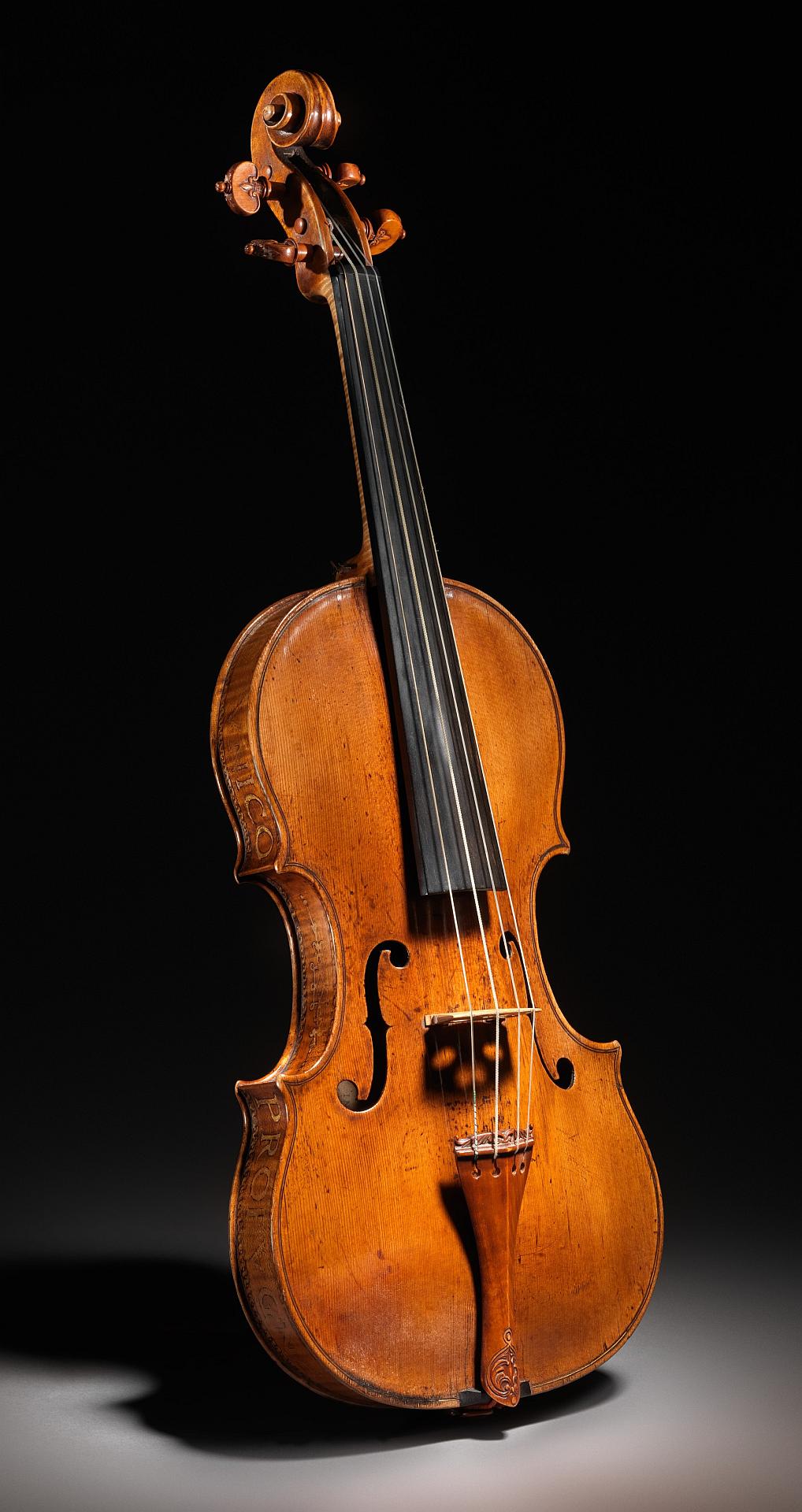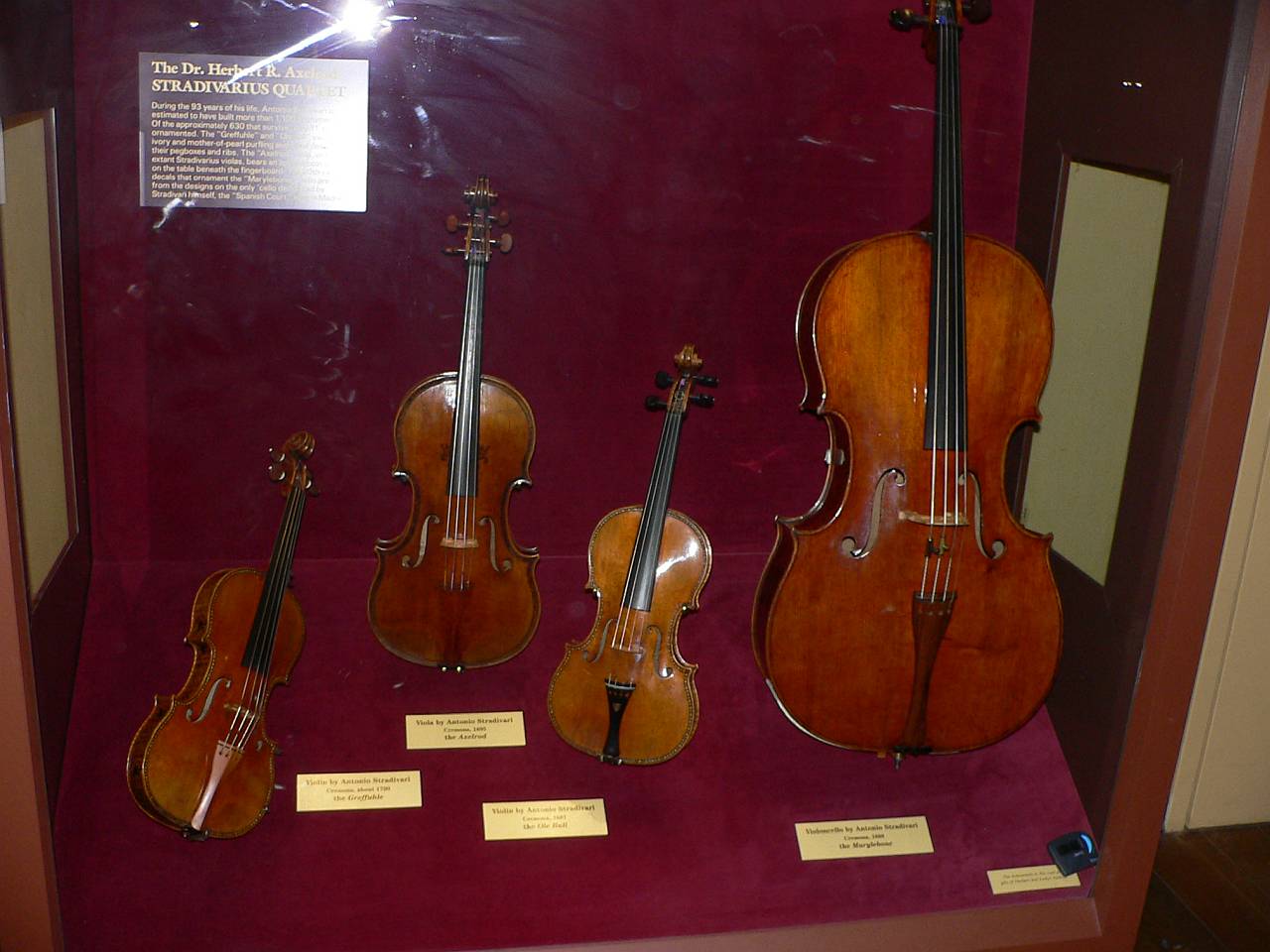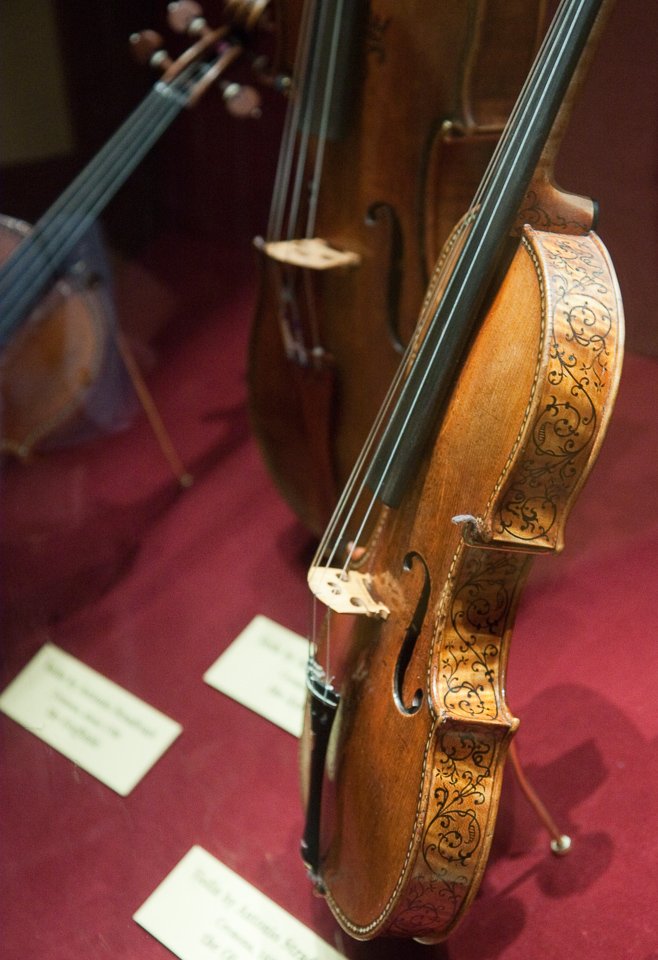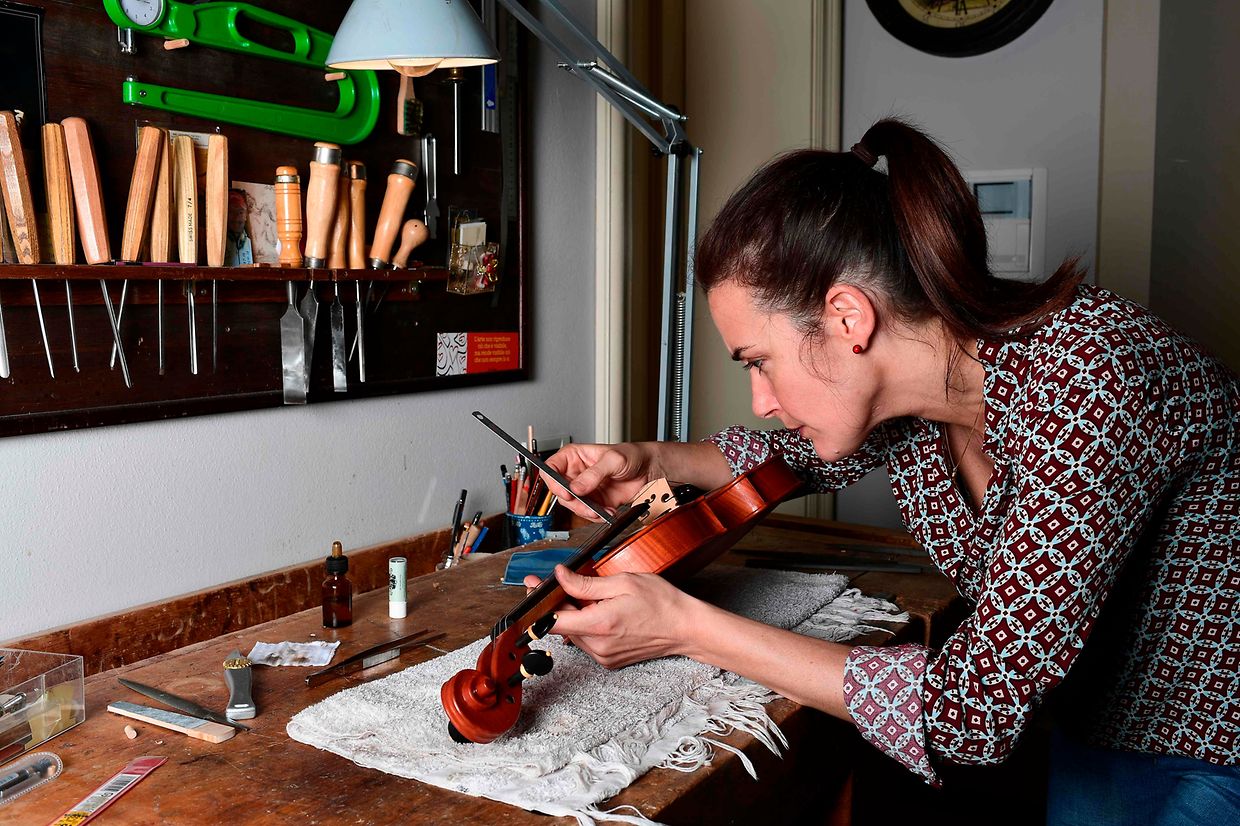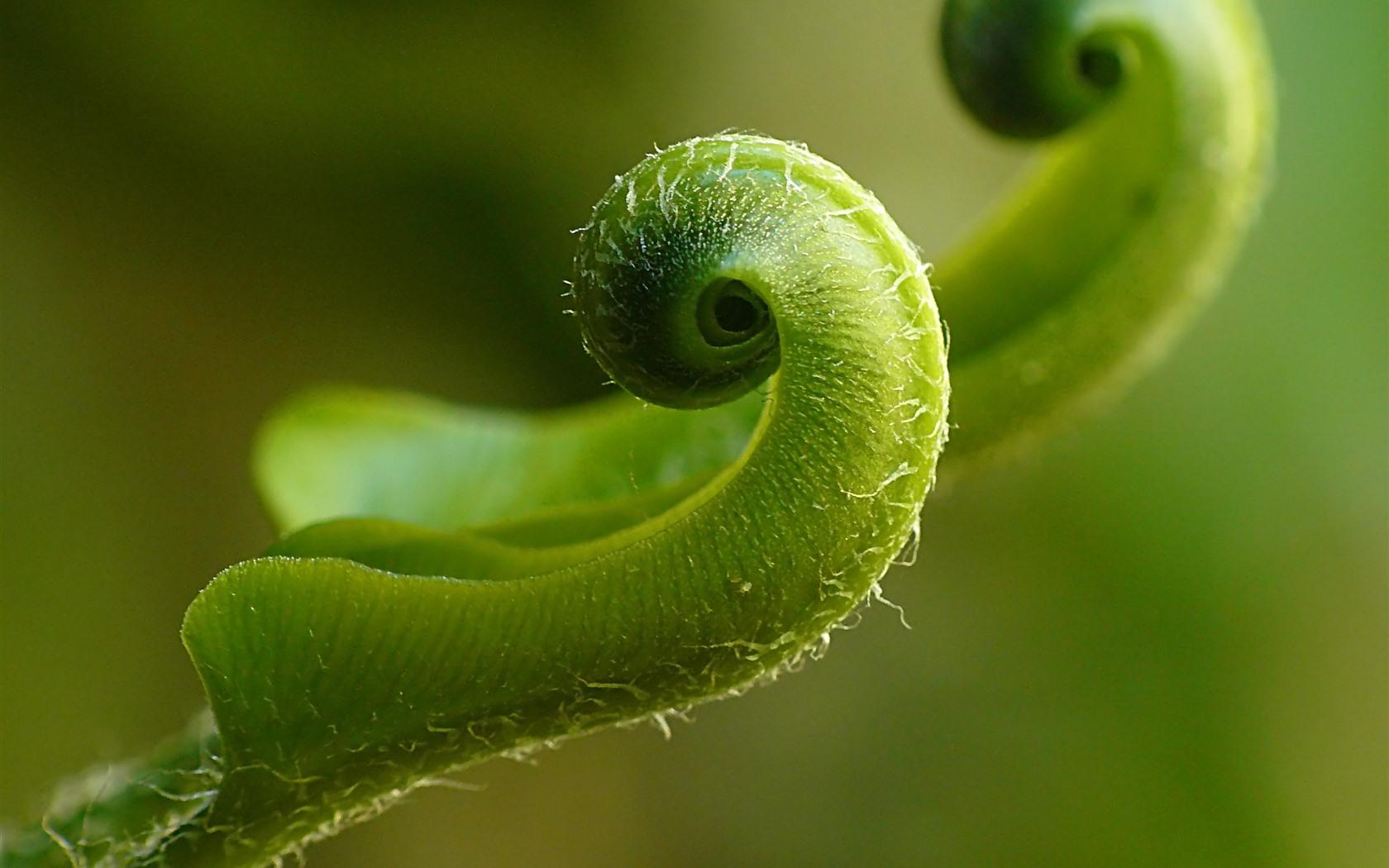
Violin Makers (2013). Full documentary – ENG.
From Count Cozio di Salabue to Giuseppe Fiorini, from the Bisiachs in Milan to the foundation of the first schools of violin making, the history of bowed instruments during the past two centuries in Italy narrated through the testimonies of the leading makers of our times, and featuring the instruments of the most important Italian collections, rare photographic and video documents.
By Paolo Parmiggiani and Andrea Zanrè, Edizioni Scrollavezza & Zanrè (2013).
9 Best Violin Makers Through History and Present
Violin makers, or luthiers, are the people who manufacture violins and other instruments from the violin family, and have been doing so for nearly 500 years! Dating back to 1565, Cremona violin maker Andrea Amati created the world’s first (recorded) four-string violin named the Charles IX violin after the French king for whom he created the violin.
To be an acclaimed violin maker means perhaps, that a person is one of the few masters in existence with such great craftsmanship that the instrument is both aesthetically appealing and superior in sound quality when compared with other violins.
Let’s dive together into historical facts about the most famous violin makers in history followed by a shortlist of modern luthiers that are being widely recognized.
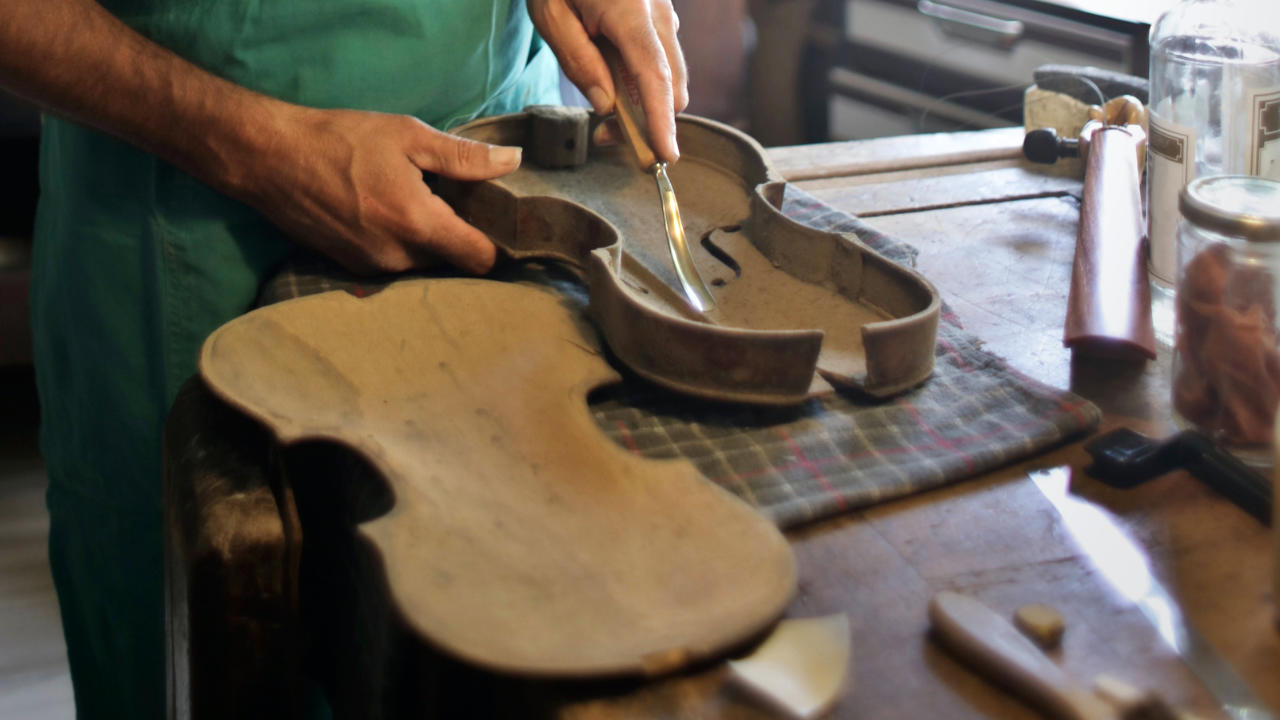
Who is a Luthier?
Luthier is the official title of a violin maker. The word luthier was originally used to refer to someone who made lutes, a plucked, stringed instrument from the Renaissance Era. The violin maker eventually became referred to as the luthier in France as the violin became more common.
In French, the word is pronounced as [loo-ti-ay], and in English-speaking countries, the word is pronounced [loo-the-er].
Historically, luthiers’ work in crafting stringed instruments was not specifically designated to the violin, but rather any and all instruments that are plucked or bowed, with the exception of the piano and harp. In fact, to be a luthier is to be versatile in craftsmanship as they have to work on violins, violas, cellos, double basses, and for some specialists, even historical instruments such as the viola da gamba (it’s similar to the modern cello, except it has seven strings and frets).
The luthier not only works to create instruments but is also a professional and specialist when it comes to repairing and restoring violins as we so often need in our modern times as did other instrumentalists back then. A luthier can solve almost any issues you may have with your instrument, whether it be a broken piece, a need for re-varnishing, or a rehair for your bow.
A Brief History: the Italian City of Cremona
The job of a luthier first came into existence with Cremonese violin maker Andrea Amati in the 16th century who established the so-called violin family. Of course, he was not the only luthier at the time. There were many other families and independent makers from Italy who also made instruments.
Andrea Amati (1505-1577)
Andrea Amati of Cremona, Italy, was the first recorded luthier to craft a four-string violin. Although we typically see violins with four strings, this was not always the case, and Amati can be credited with being one of the first violin makers to really standardize the four-string violin which we still use today.
Though the modern instruments are slightly different from the original violins of the 16th century, they are still the same instrument. One of the differences is that it was common for violin makers back then to include their own personal touch to the instrument, like a small design on the violin’s body, for example. The first instrument of Amati has inscribed on its ribs (the side of the violin) “Pietate et Justitia” the motto of French King Charles IX for whom he created the violin.
Andrea Amati was well-praised for his violin making and soon established a school of violin makers. His school of violin making focused primarily on the technique of building violins. The method of creation, the different shapes and sizes of the instruments, the types of materials needed, and the basic format for instruments in the violin family. His standardization of the violin family first started within his Italian family, teaching his sons Antonio and Girolamo who would eventually pass the tradition onto Nicolò Amati, the grandson and most famous of the Amati family.
Nicolò Amati (1596-1684)
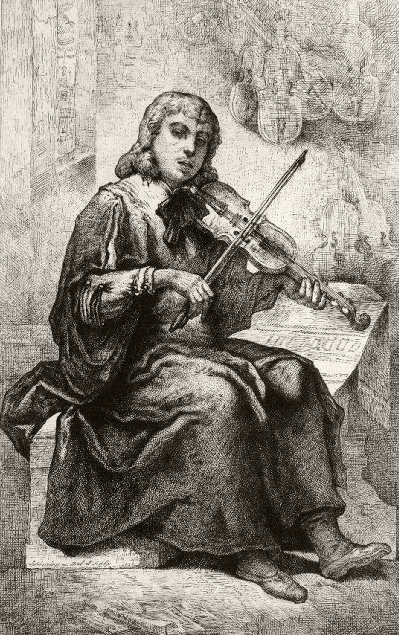
Nicolò Amati, also born in Cremona, Italy, was as rebellious as all young violin makers are! Violin making ran through his veins, so we can only imagine the reaction of his family when he began to develop based on their traditional model. The Cremonese luthier made violins that were much smaller than what his family had made in the past, yet they were much more full in tone and produced a large, robust sound. The young violin maker’s instruments surpassed those of his family and still, today, are some of the most sought-after violins in the world.
However rebellious Nicolò might have been, he continued his family legacy by teaching other protégés how to create violins with the same tradition of the finest craftsmanship. Two of his most well-known pupils also surpassed him in notoriety, Antonio Stradivari, and Andrea Guarneri.
Andrea Guarneri (1626-1698)
Founder of Casa Guarneri, Andrea Guarneri studied with Nicolò Amati in the town of Cremona before eventually opening his own shop. Of all the Cremonese violin makers on this list, Andrea’s violins were the least successful and least innovative of them all. His contributions to the violin-making world can greatly be attributed to teaching his son how to make violins, a tradition he learned from the Amati family.
Giuseppe del Gesù Guarneri (1698-1744)
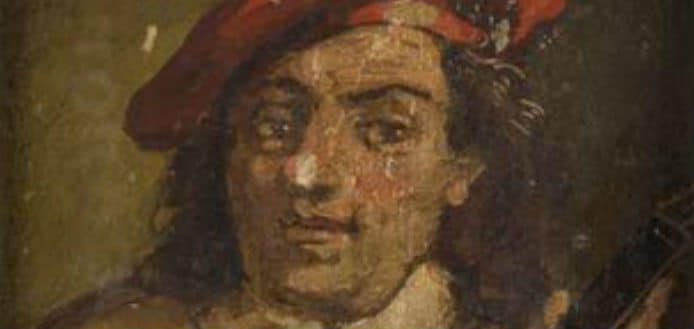
As we have come to learn, the city of Cremona, Italy is the birthplace of many of the world’s most famous luthiers, including the son of Andrea Guarneri, Giuseppe del Gesù. Although we now recognize Giuseppe as one of the top three violin makers of all time, the older Italian’s career was short-lived as he was in a constant rivalry with the ever-popular Antonio Stradivari.
The town of Cremona and the demand for fine violins was dominated by the young Antonio Stradivari who essentially had a monopoly over the city. Among Giuseppe’s greatest downfalls was his constant need to experiment with the models of his violins, leading to an inconsistent and worse-in-sound violin. Perhaps he was just trying to keep up with his much younger rival, and his instruments are no doubt some of the best from this century, but his life would be in great juxtaposition to Antonio Stradivari. I think he would be happy to know now that his most famous violin, The Vieuxtemps Guarneri del Gesù is worth an estimated $16 million USD.
Antonio Stradivari (1644-1737)
Antonio Stradivari from Cremona, Italy is the most famous and most recognized name in the history of violin luthiers and violin making in general. His instruments are considered to be the finest among all violins in the world. They have a remarkably unique tone and quality and have caught the attention of modern scientists for the past few decades.
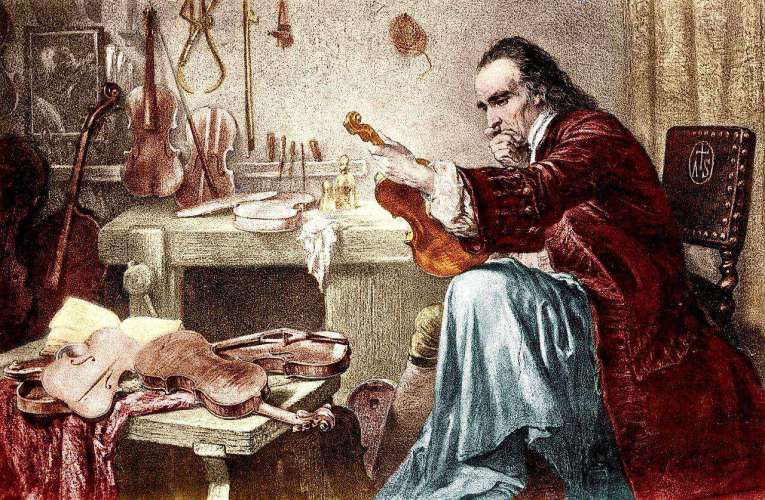
We now know that Stradivari’s craft with regard to violins included the use of longer violins (something he would eventually abandon) as well as a darker, more rich varnish than those found in his predecessors’ violins (this he would continue until his death). Scientists have speculated on what to attribute his unique sounding violins but have yet to come to any certain conclusions.
Few people in the world have actually played such a fine instrument as a Stradivarius, but many of the world’s most famous violinists frequently perform using instruments of Antonio Stradivari. It is a true testament to the craft and literal art found in his violins.
The Most Famous Violin Makers
The most famous violin makers all come from a town in Cremona, Italy. In order of notoriety they are:
- Antonio Stradivari
- Giuseppe del Gesù Guarneri
- Nicolò Amati
Why Are Stradivarius’ the Best?
The violins of Antonio Stradivari are considered to be the world’s best violins because of the tone which they are capable of producing. Even in a large concert hall with an audience of thousands of players, musicians playing on Stradivarius violins can be heard from even the furthest seats in the venue.
Watch the video below to hear a comparison of 7 violins built by Stradivari. Do you hear the difference between these instruments?
Contemporary Notable Luthiers
Now, let’s have a look at the most recognized violin makers of our time.
Daniele Tonarelli

Daniele Tonarelli, born in Cremona, Italy is one of the worlds leading contemporary violin makers and definitely most in demand! Master Tonarelli is from the “worlds-center of violin making” and his violins are of the highest quality one can expect. He also makes violas and cellos and has them listed for sale on his website.
Another Cremonese luthier is Benedicte Friedmann whose instruments are among the best of the world’s contemporary instruments. Her sense of craft takes shape in the form of Guadagnini models, who was another famous Cremonese violin maker of the 16th century. As one of the world’s most sought-after violin makers in the 21st century, Friedmann is someone you should keep an eye on if you are interested in violin making.
W.E. Hill & Sons
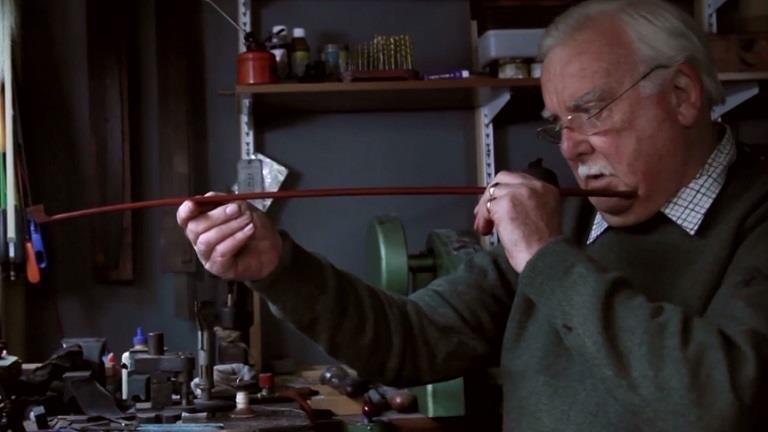
William Watson Hill & Sons
The W.E. Hill & Sons company is not only on top of the world violin-and-bow making as contemporary luthiers, but they have also been around for over one century and produce amazing bows, violins, violas, and products for violin maintenance like cleaning products or peg paste.
Olaf Grawert
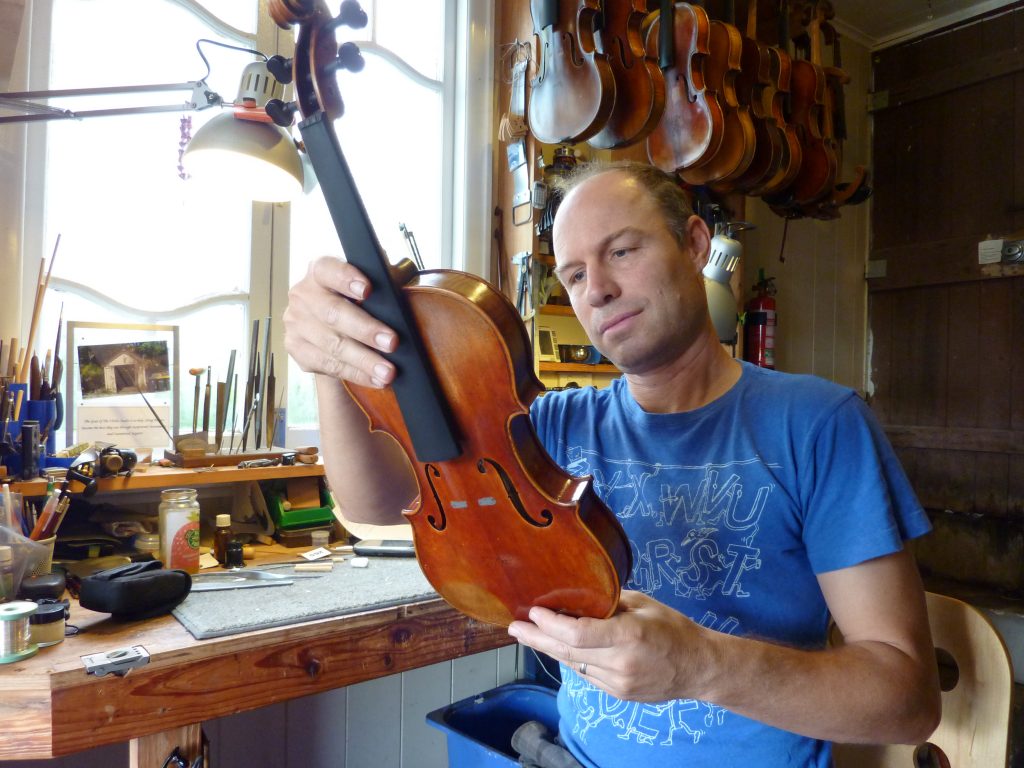
Australian Violinist and Luthier Olaf Grawert is a professional luthier and restorer who frequently posts videos on Youtube for educational and entertainment purposes. If you want to learn more about what exactly it takes to create a violin, or if you want to look into the world of violin making from the perspective of a professional violin maker you should definitely check out his Youtube channel!
Conclusion
As string players and as musicians in general, our instruments are quite important and can have an impact on the music we play. If your violin is too uncomfortable in some ways (for example, the strings are too high above the fingerboard) then you should visit your local luthier as soon as possible!Musicians often tend to ignore such problems but are surprised at how easily their playing can improve after a visit to their luthier.
Because this job is quite specialized and because there are so few schools around the world for violin making, your local luthier might have studied alongside some other famous luthiers. Whatever service you may need, your luthier is your friend! They are knowledgeable experts and are specialists within the music community.
After exploring the history and lineage of famous violin makers, I hope you find yourself more curious and more excited about the instrument you play on! No matter where you bought your instrument, it was crafted by the hands of someone you haven’t met. Maybe you’d like to learn more about that maker?https://violinspiration.com/violin-makers/
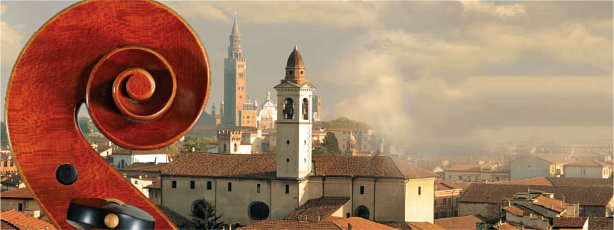
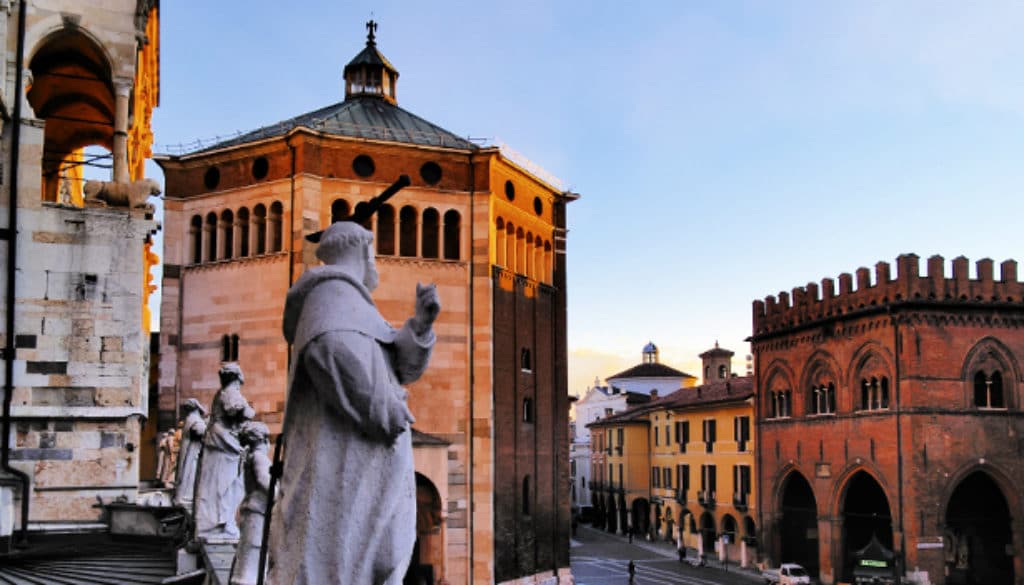
Cremona – City of Violins
The city of Cremona lies at only a one hour drive from Milan and definitely is worth a day trip if you are interested in historical locations and … violins. Cremona happens to be the birth place of Stradivarius, the Guarnieri’s and Amati and still is a major violin producing community. You can visit a museum dedicated to the violin and have a look at the city’s violin collection. Apart from that, Cremona also has one of the most beautiful medieval squares of Italy , with the Duomo , Palazzo del Comune , Torrazzo , the Battistero and the Loggia dei Militi . The nice thing about Cremona is that you can easily see the whole of the city on foot, with the only exception of the San Sigismondo abbey. For the sweet tooths it may be nice to know that Cremona is also the home of the torrone , a kind of nougat, which you may buy at Sperlari ‘s.
THE DUOMO
The magnificent facade of the Cremona cathedral is a sight you’ll not easy forget and the city is worth a visit for this monument of architecture alone. The face of the Duomo is a history book of architectonic styles , from Romanesque to Renaissance as it is the result of a series of reconstructions from the 12th till the 16th century. The lower part of the facade dates from the early period, the upper part ( loggia ) from the Renaissance. Note the sculptures of the prophets, the Madonna with Child and two bishops, the symbols of the Evangelists, the months of the year and the sarcophagi under the portico, especially the one of Folchino Schizzi by Campione . The splendid interior is very richly decorated by the masters of Cremona and Lombardy. Look for the Crucifixion and the Deposition paintings of Pordeone and the fresco decoration on the side walls of the nave (early 16th century), portraying the Life of Mary and Christ, the first of which is by Boccaccino and the others by Bembo, Gatti, Pordeone etc. Worth a closer look are also the richly decorated pulpits, the choir and the crypt with the altar of St Marcellinus and St Peter and the remains of St. Omobono. The cathedral is connected to the Torrazzo via the so-called Bertazzola portico , of the Renaissance period. Take your time to admire this gioiello !
TORRAZZO
With its 112 meters the Torrazzo tower cannot be missed when you visit Cremona and it has become the symbol of the city . The tower claims to be the third highest brickwork bell tower in the world and the oldest still standing. The tower was built in four stages , the first initiating in 1230. The top marble spire was completed in 1309. The astronomical clock dates from the 16th century and indicates the path of sun and moon through the zodiac as well as hours, days, months and the lunar phases. It still functions (but whether it gives the correct indications?). You may climb the 500 steps (the number differs according to the source, please count them and inform me and I’ll prepare a statistic!) of the stairs to reach the upper floor and enjoy the panorama.
BATTISTERO
On the Piazza del Comune adjacent to the Duomo lies the octagonal baptistery , a 12th century construction but with 16th century adjustments. The original facade of brick was (partly) covered with marble to achieve more unity with the facade of the cathedral and the portico entrance with the lions and upper loggia were added as well. The interior with its beautiful dome may still be admired in its original state. In the center there is a 16th century baptismal font , octagonal as well, of solid red marble. Worth a look are a 14th century crucifixion and other statues and fragments of the Middle Ages. A peculiarity are the incisions on the outer wall facing the Camposanto dei Canonici . Legend has it that these were made by prisoners that were condemned to death and that spent their last night in the chapel.
PALAZZO COMUNALE
Opposite of the Duomo on the Piazza del Comune stands the building of the former city council of the 13th century.The building was largely reconstructed and widened (15th century) and now consists of several porticoes and courtyards. The city tower is enclosed by the structure of the palazzo . In the courtyard there are some fragments of 13th century frescoes .On the first floor there are several interesting rooms such as the Sala del Consiglio (paintings of Miradori, ), the Salone della Consulta , the Sala della Giunta and finally the Saletta dei Violini . The last room holds the city collection of string instruments : Gli Archi di Palazzo Comunale .
LOGGIA DEI MILITI
The Loggia dei Militi is one of the historical buildings facing the Piazza del Comune , lying a little aside. It resembles the Palazzo del Comune as well as the Palazzo Cittanova . As the plaque on the facade says, it was built in 1292 and it used to be the place where the communal militia held their meetings. There is just one room on each floor. In the 16th century the building became the courthouse that could only be entered through a small staircase, which the people nicknamed the Scala dei Lupi, the wolves’ staircase. In later times the building was modified, but at the end of the 19th century it was brought back to its original state. The plaque on the facade not only gives the date of construction of the palazzo but also displays the city banner, flanked by four lions that represent the city gates or districts. Under the portico you’ll find the emblem of the city . Two Hercules like figures hold the emblem, Hercules being the founder of the city, according to myth. On the emblem an arm is represented, holding a golden ball . This representation can also be found on a wall in the courtyard of the Palazzo del Comune and is related to an anecdote about the paying of the taxes to the emperor, in the form of a 3 kg golden ball. The mayor Baldesio refused to pay the excessive tax, beat the emperor himself in a duel an kept the ball for the city.
VIOLINS
In the Palazzo Affaitati you’ll find the Stradivarius Museum. The museum displays artifacts and tools from the workshop of the maestro, as collected by the 19th century violin scholar Cozio . You’ll see tools, drawings and models for the construction of string instruments as used by Stradivarius himself, but no complete Stradivarius violins . For those you need to go the city’s string instrument collection at the Palazzo del Comune . The museum is organized in three sections :
- an itinerary that explains the construction of a contralto viola
- a display of a group of instruments which represents mainly Italian 19th/20th century violin makers
- the Salabue-Fiorini-Cozio collection proper
Cremona is the city of the violin, as Stradivarius , Guarneri and Amati , amongst others, lived and worked here. The city owns a rich collection of historical string instruments and they are on display in the Palazzo del Comune . The collection can be found on the first floor of the palazzo in the Saletta dei Violini (entrance in the courtyard).
The most important pieces of the collection are:
- Carlo IX di Francia , Andrea Amati, 1566
- La Stauffer , Antonio and Gerolamo Amati, 1615
- L’Hammerle , Nicolò Amati, 1658
- Il Clisbee , Antonio Stradivari, 1669
- Violin by Francesco Ruggeri, 1675
- Il Quarestani , Giuseppe Guarneri, 1689
- ex Cristiani , Antonio Stradivari, 1700
- Il Cremonese , Antonio Stradivari,1715
- Il Vesuvius , Antonio Stradivari, 1727
- Lo Stauffer , Giuseppe Guarneri (detto del Gesù), 1734
- Lo Stauffer , Enrico Ceruti, 1868
- Violin by Simone Fernando Sacconi, 1941
They all have names, like pizza’s, they’re just a bit more expensive.
For those who are very interested it is possible to arrange for a live performance with one of the violins of the collection , but you’ll have to book 15 days in advance (contact ticket office). But if you are lucky, you’ll find Andrea Mosconi playing several of the violins, as he does every day, to keep them in good condition. There is an elevator to grant access to the disabled. http://italiaanse-toestanden.duepadroni.it/cremona-2/

